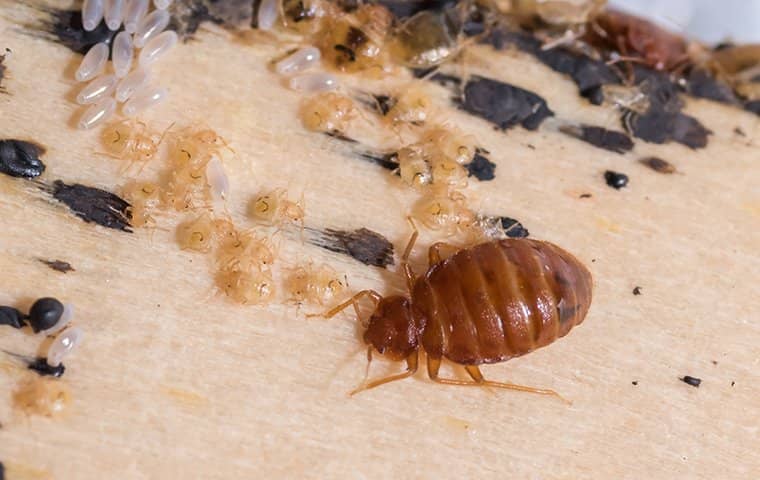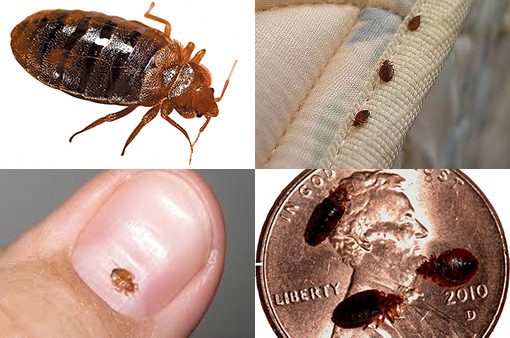Kings Pest Control Expert Cincinnati: Reliable Bug Administration
Kings Pest Control Expert Cincinnati: Reliable Bug Administration
Blog Article
Kinds Of Insect Control: Which Technique Is Right for Your Problem?
When encountered with a parasite invasion, the selection of an appropriate approach for bug control is essential in effectively taking care of the circumstance. By exploring the numerous types of parasite control techniques available, people can make informed choices tailored to their unique scenarios, guaranteeing an extra lasting and effective result in pest obliteration.
Chemical Insect Control
Chemical parasite control includes using synthetic or normally derived chemicals to take care of and eliminate pest populaces efficiently. This approach is typically made use of in agriculture, forestry, and domestic setups to fight a variety of parasites, including rodents, weeds, and pests. Making use of chemical pesticides can offer fast and targeted solutions to pest problems, making it a popular option for several individuals and companies.
One of the crucial benefits of chemical pest control is its capability to quickly remove pests, minimizing the threat of damages to crops, building, and human health. By utilizing certain chemicals that target certain pests, this method can efficiently manage problems while decreasing harm to advantageous organisms and the atmosphere when used properly.
Nonetheless, the usage of chemical parasite control additionally raises concerns about potential unfavorable effects on non-target species, water sources, and human health. It is essential to comply with security guidelines, apply chemicals responsibly, and consider alternative pest control approaches to decrease these threats and make certain lasting bug administration methods.
Biological Pest Control
Biological parasite control, additionally referred to as biocontrol, uses living organisms to lower and handle insect populations normally. This technique utilizes the power of nature to regulate bugs without the requirement for artificial chemicals. Biocontrol can include the introduction of natural adversaries of the parasite species, such as parasites, killers, or microorganisms, to reduce pest populaces. By utilizing the pest's all-natural predators or virus, biological pest control uses a sustainable and ecologically friendly option to pest management.

Mechanical Bug Control
Using hands-on and physical methods to take care of bug populations, mechanical pest control provides an alternative approach that does not rely upon making use of living microorganisms or artificial chemicals. This technique involves using obstacles, catches, or other devices to literally prevent or get rid of insects. By obstructing parasite entrance points or setting up catches to capture them, mechanical insect control can effectively reduce problems without introducing chemicals into the setting.
One typical example of mechanical parasite control is the use of mesh screens on doors and windows to stop pests from going into structures. This basic yet effective approach functions as a physical barrier, maintaining insects out while enabling appropriate air flow. Furthermore, devices like mousetraps, fly swatters, and ultrasonic repellents drop under the mechanical pest control group.
While mechanical insect control approaches can be labor-intensive and need normal tracking and upkeep, they provide a environmentally pleasant and sustainable option for managing insect problems. By integrating various mechanical techniques, homeowner can develop a comprehensive bug control strategy that reduces dependence on chemical pesticides.
Physical Pest Control

Some typical physical insect control methods consist of using obstacles such as screens or nets to stop bug entry, traps to record and eliminate insects, and hand-picking to physically get rid of bugs from plants or structures. Additionally, strategies like warm treatments can be made use of to manage insects like bed bugs by elevating the temperature to levels that are dangerous to the insects.
Physical pest control is specifically helpful in integrated bug Check Out Your URL administration (IPM) strategies, where numerous insect control methods are integrated for effective parasite administration while reducing using chemicals. By using physical parasite control methods, people can successfully address parasite infestations with marginal environmental influence.
Integrated Pest Administration
When implementing physical bug control methods as component of pest administration approaches, Integrated Insect Monitoring (IPM) becomes a detailed approach that leverages different strategies to efficiently regulate pest populations. IPM focuses on lasting avoidance of insects with a mix of biological, cultural, physical, and chemical devices customized to specific bug concerns. By integrating multiple control techniques, IPM intends to minimize the dangers related to parasites while also minimizing dependence on chemical remedies.
One key element of IPM is the emphasis on surveillance and assessing continue reading this pest populations to identify the most proper control approaches. This aggressive approach enables early intervention and targeted techniques, causing extra reliable parasite management. Additionally, IPM promotes environmentally friendly practices by focusing on non-chemical control approaches and just making use of chemicals as a last hope.
Conclusion

By using the bug's all-natural killers or pathogens, biological bug control supplies a lasting and eco pleasant solution to pest management. - Kings pest control Cincinnati
Using hand-operated and physical approaches to take care of pest populations, mechanical pest control offers an alternative method that does not depend on the use of living organisms or synthetic chemicals.An effective method to managing insect populations without relying on chemical or biological methods entails the usage of physical parasite control strategies.When applying physical bug control techniques as component of insect administration techniques, Integrated Pest Management (IPM) arises as a thorough method that leverages various techniques to properly regulate pest populaces. Chemical insect control involves the usage of chemicals, biological pest control makes use of all-natural predators, mechanical pest control entails physical obstacles, physical insect control includes capturing or eliminating insects, and incorporated bug administration combines numerous techniques for a holistic strategy to pest control.
Report this page